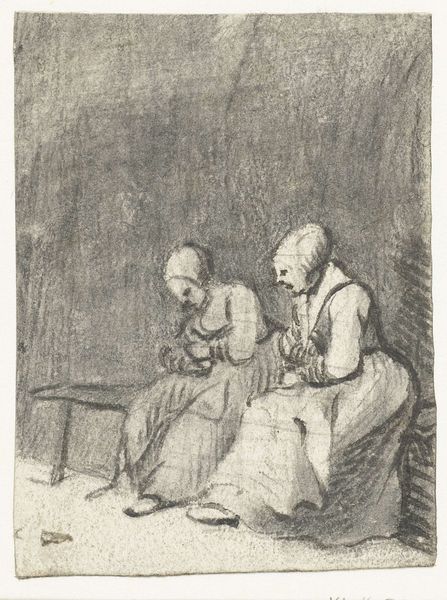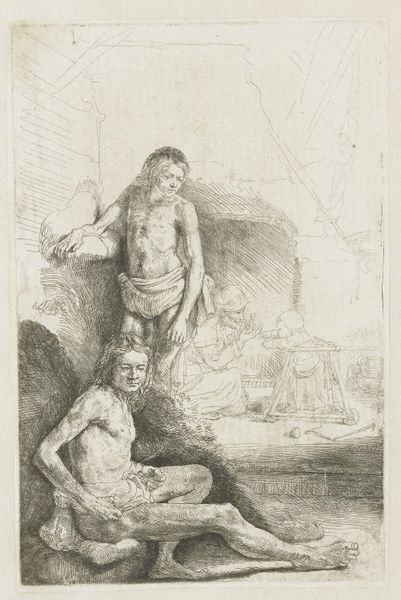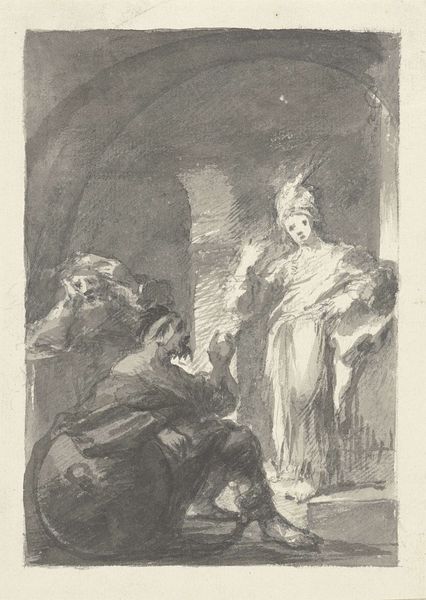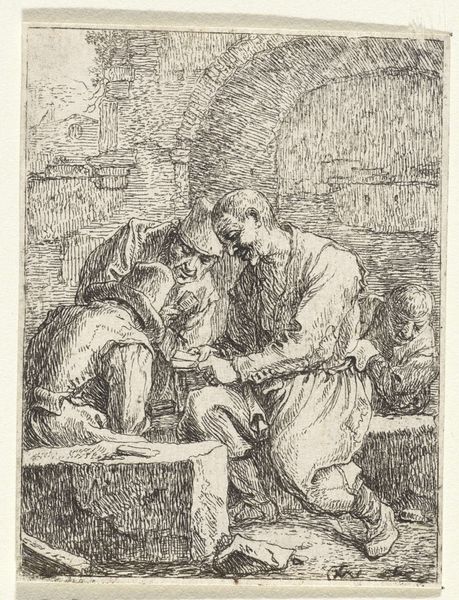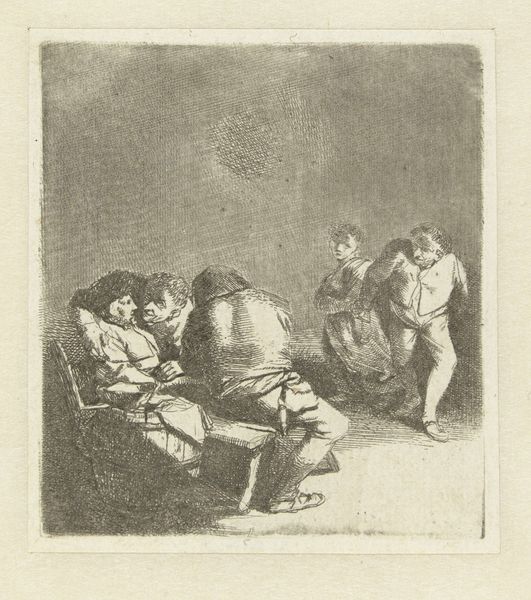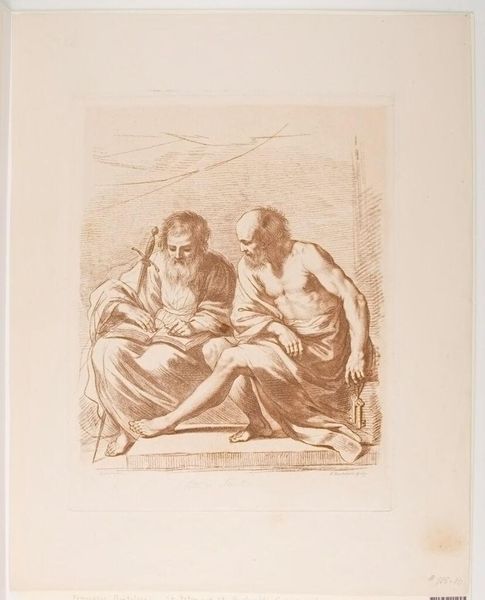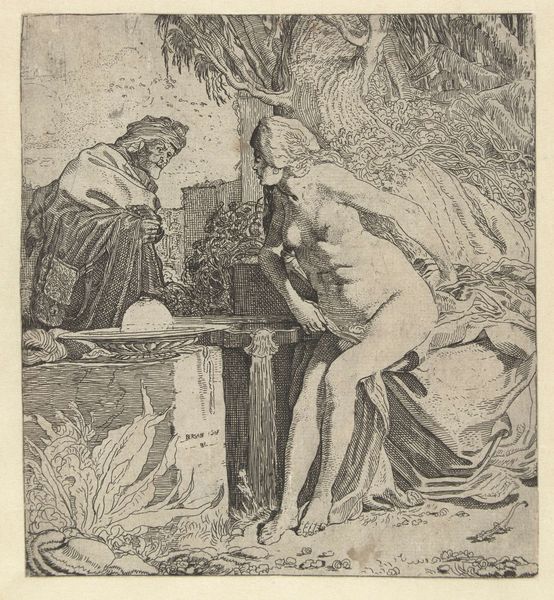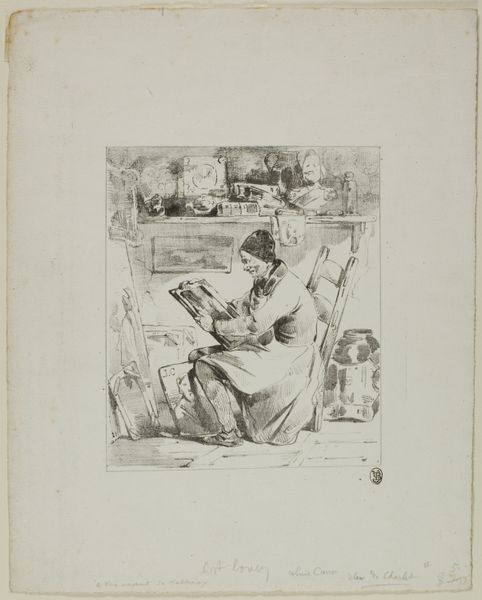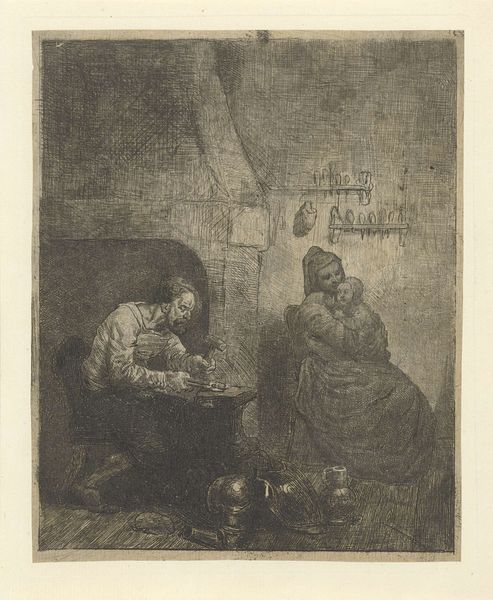
etching
#
allegory
#
baroque
#
etching
#
figuration
#
genre-painting
#
history-painting
Dimensions: height 120 mm, width 106 mm
Copyright: Rijks Museum: Open Domain
Curator: Here we have "Vertumnus en Pomona", an etching created sometime between 1630 and 1700, now residing at the Rijksmuseum. Editor: This piece immediately strikes me as…intimate. A private moment caught in time. There's something almost theatrical about the figures; their gestures seem rehearsed, or deeply ingrained. It feels very baroque to me; all dark and light. Curator: Yes, baroque is fitting. Notice how the etcher manipulates light and shadow – chiaroscuro, in essence – to enhance the drama. The light highlights Pomona's youth and beauty in contrast to the aged appearance of Vertumnus in disguise. Note the etcher's fine lines to evoke textures. The gaze also becomes integral. Editor: Right. He's all wrinkles and knowing eyes, that old chap. And she looks pensive, perhaps even…suspicious? Is this moment right before she realizes who he really is? There's tension there. Like the air is thick with unspoken words. The way Vertumnus grips his staff; the careful placement of Pomona's hand. Is it desire? Anxiety? Curator: The allegory hinges on transformation and deception, common themes of the period. Observe the semiotic play between youth and age, beauty and…well, not beauty. It is far from being objective depiction: the scene and figuration becomes an artificial theater for narrative allegory to unfold and come alive. Editor: You can almost feel the turning point in the tale! I wonder if they used real models, imagined this… it makes you imagine how different our first impression of each other might look in one such etching. It gets the old creative juices flowing. Curator: A compelling thought! We could say that what is ultimately offered through these aesthetic gestures is access to historical allegory which allows one to critically reflect on time. The technique helps evoke all sort of ideas, themes and associations. Editor: Agreed. Thanks for teasing that out.
Comments
No comments
Be the first to comment and join the conversation on the ultimate creative platform.
